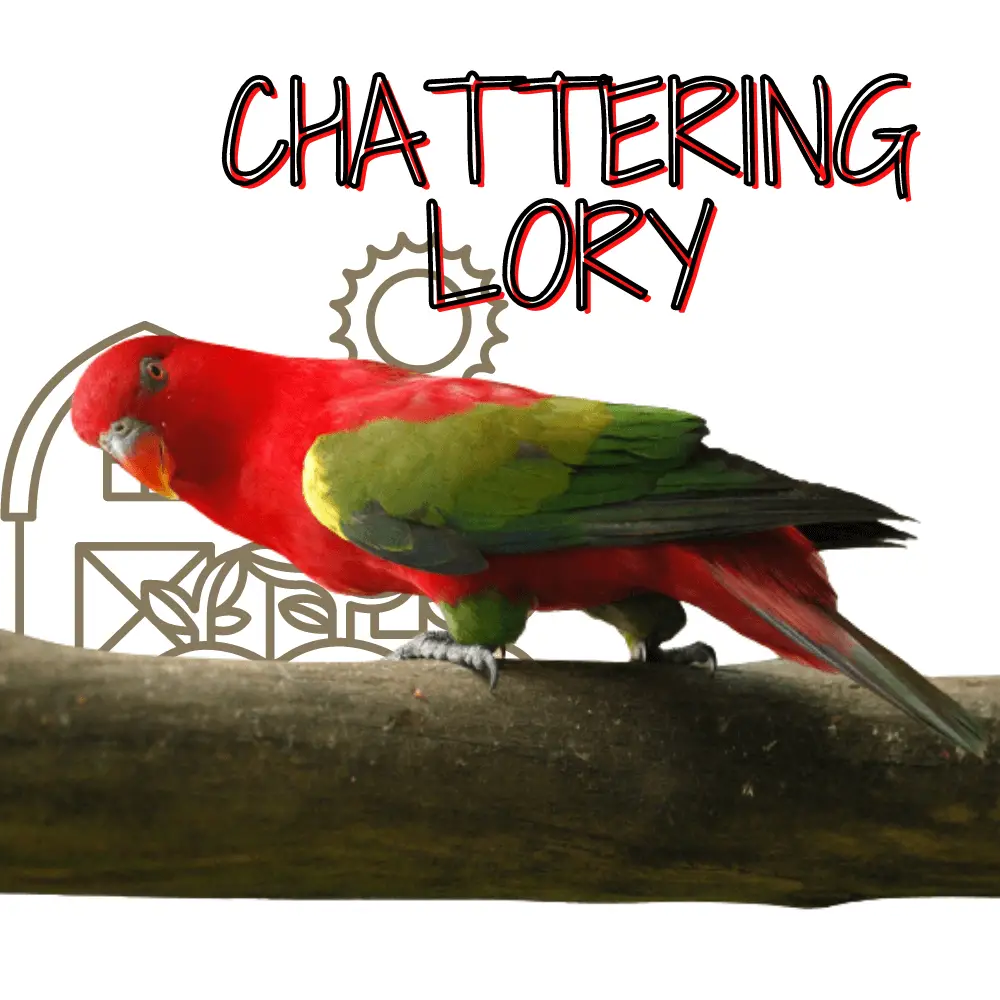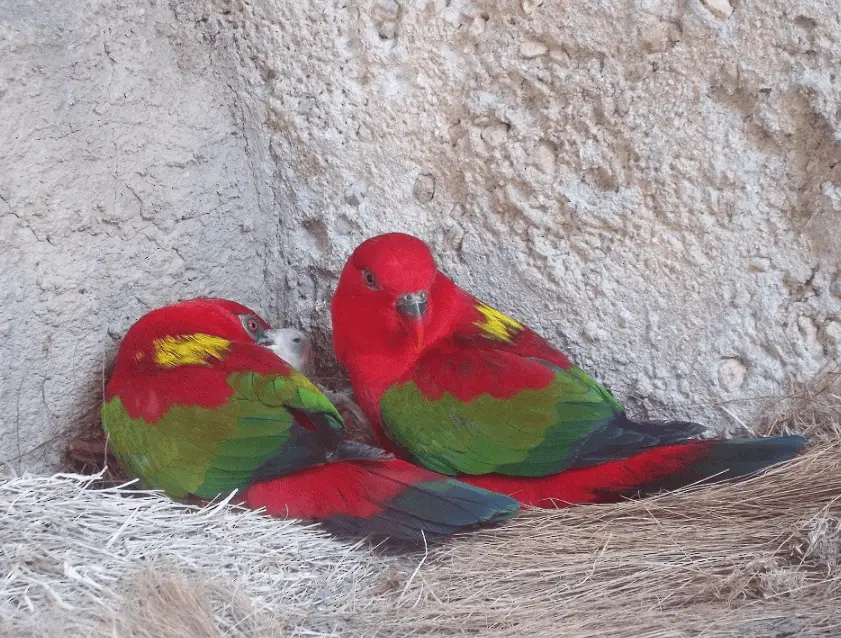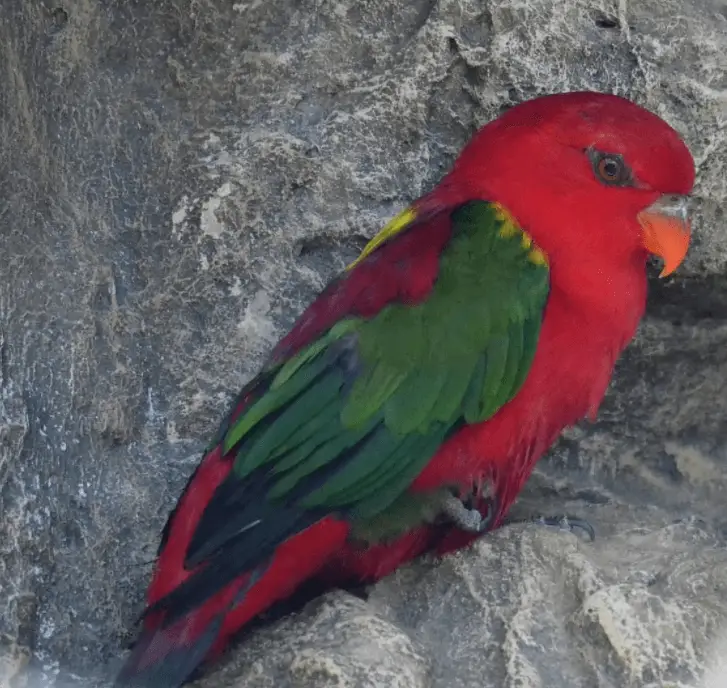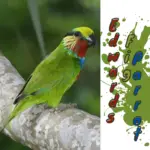
Chattering Lory 30 cm. Mainly red, mantle sometimes with traces of yellow spotting; bill orange, basally dark; thighs and wings dull green; bend of wing and underwing-coverts yellow; broad red band across the underside of primaries; tail distally dark green.
Immature has a brownish bill. Race flavopalliatus has a bold yellow patch on the mantle and slightly brighter green wings; morotaianus has a slight yellow mantle patch.
Systematics History
Editor’s Note: This article requires further editing work to merge existing content into the appropriate Subspecies sections. Please bear with us while this update takes place.
Forms a species group with L. domicella, L. lory, and L. hypoinochrous. Three subspecies were recognized.
Subspecies
Lorius garrulus morotaianus Scientific name definitions
Distribution
Lorius garrulus garrulus Scientific name definitions
Distribution
Lorius garrulus flavopalliatus Scientific name definitions
Distribution
Distribution
Editor’s Note: Additional distribution information for this taxon can be found in the ‘Subspecies’ article above. In the future, we will develop a range-wide distribution article.
Habitat
Chiefly canopy of primary lowland and hill forest and edges, logged forest and mature secondary woodland adjacent to cultivated land, sometimes visiting coconut plantations.

Chattering Lory
Chattering Lory Diet
Almost no information; nectar from various flowering trees, including coconut palms.
Chattering Lory Sounds
The repertoire is quite extensive. Several very nasal calls such as “nyeeeh” or a triple-noted “nyeh…ne-nyeh”, quite melodious piercing whistles such as “whee!” or “we-whee-whee!”, and also more dissonant shrill notes when perched.
Talking Chattering Lory at Salman’s Exotic Pet Store.
https://www.youtube.com/watch?v=OWnClXVK8i4
Breeding
Jun–Nov or beyond. Nest in hole typically is swelling on main trunk 20–25 m up in 30–35 m high tree; also in dead trees and broken palm stems. In captivity: two eggs; nestling period 76 days.

Conservation Status
VULNERABLE. CITES II. A BirdLife “restricted-range” species.

Red chattering lory
Population estimates for 1991 were: nominate Garrulus 31,220–220,009; flavopalliatus 11,292–48,411 birds, with 4546–32,267 in Bacan group and 6746–16,144 in Obi group; morotaianus 3848–27,120.
However, survey work in the 1990s gave figures of 56,600–105,900 birds (nominate) for the proposed Lalobata reserve alone, indicating that species might be more secure than was feared.
Nevertheless, this species, reputedly a good talker, is one of the most important in domestic trade in Indonesia, and trapping pressure is very high: a minimum of 9600 birds was estimated caught in 1991, a total which needs to be reduced by a factor of 10 to ensure sustainability.
An annual harvest of c. 6,000 birds was estimated in 2012 for Obi I.Habitat destruction in the Moluccas is still not a major concern, but logging will duly occur throughout the islands.




















